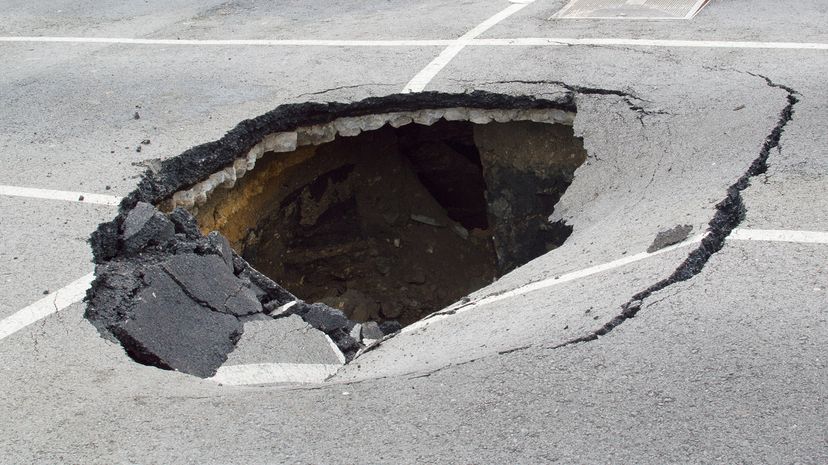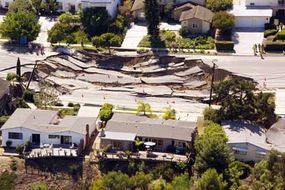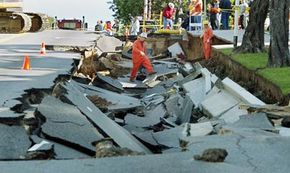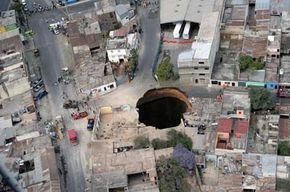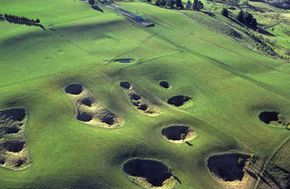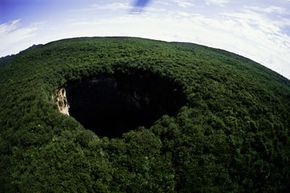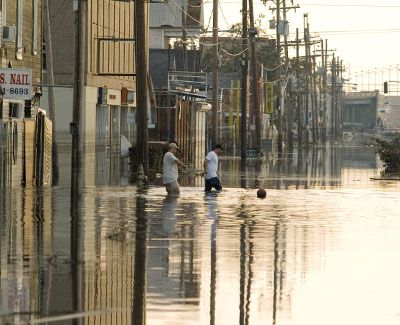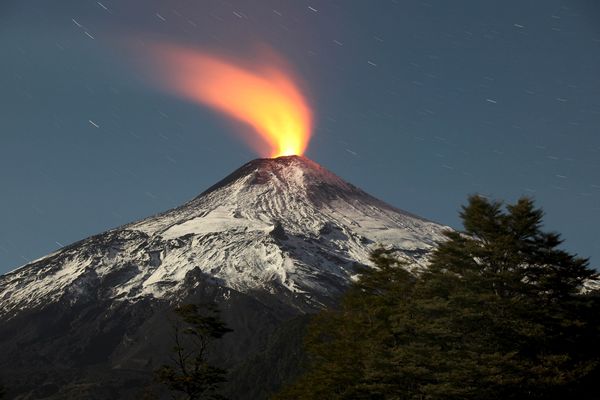Sinkholes look dramatic when you're peering down into one, but it's below the surface where the real action takes place. A sinkhole's identity centers on the gaps, crevices, cavities and voids that lie under the overburden, or the soil above the bedrock. As these gaps develop, expand and merge, soil from the overburden starts filling the void.
Cover-collapse Sinkholes
In the case of a sinkhole suddenly opening to swallow a car, it formed because the overburden was no longer stable enough to hold itself up.
These common type of sinkhole are collapse or cover-collapse sinkholes. Although these sinkholes can appear suddenly on the land surface, the erosion that makes them happen has likely been taking place for weeks or years before, underground and out of view. So let's head underground.
The top layer of a cover-collapse sinkhole is usually a soft overburden, made of soil with a lot of clay in it. Over time, a small cavern forms underneath that soil. Opportunistic sediment takes advantage of the newly free real estate and starts spilling into the cavern — a process known as spalling.
As spalling continues, the underground cavern fills with more sediment, hollowing out the space under the overburden. Eventually, the overburden becomes so thin that there's a sudden collapse into the cavern below (this is the "cover collapse"), creating a sinkhole.
In some cases, the cover can support its own weight but crumbles when additional weight, whether from a hapless person or car, passes over it.
Cover-subsidence Sinkholes
With cover-subsidence sinkholes, water permeates the soft overburden.
An example of this type of terrain is an overburden made up of up to 100 feet (30 meters) of sand with a small amount of clay below before yielding to soft limestone. As limestone dissolves and leaves a void, sediment from the overburden seeps in, creating a bowl-like impression on the Earth.
These sinkholes, often only a few feet across and deep, are smaller than many others because after reaching a certain size, sand and sediment pour into the hole [source: Southwest Florida Water Management District].
This inflow of sediment can block the outflow of water by stopping the cracks and passages that connect the sinkhole to underground conduits. Many of these sinkholes then become ponds, as the water has nowhere to drain. They also don't produce the spectacular kind of cave-in associated with a cover-collapse sinkhole.
Dissolution Sinkholes
Dissolution or solution sinkholes are essentially a deep impression in the ground. These sinkholes usually have a thin overburden (if any), which washes away or erodes. The now-exposed rock then progressively dissolves when it touches acidic water.
The bare area hollows out, forming a shallow basin. Water often pools on the surface of a dissolution sinkhole, creating a sort of pond that compounds the erosion of rock below.
Also, like in other types of sinkholes, objects and other material can get stuck in the fractures where water would normally flow out. Unlike a cover-subsidence sinkhole, there is no overburden or covering sediment to spall into the sinkhole or cover the eroding rock.
While sinkholes are natural hazards, human activity can also produce them.
